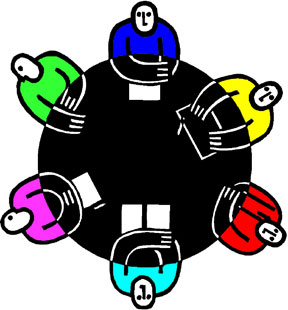
The existence of volunteer committees to support a community association's board of directors can be essential to the success of a productive board and may also serve as the training ground for new and future board members. The major function of such committees is to assist the board by providing information gathered through research for a recommended course of action for which the purpose, scope and authority must first be agreed upon. Sound simple? Read on.
Lead Down the Garden Path
I am reminded of a story I was told by a frustrated member of a committee who now refuses to participate in the board or committee process for her association. At a board meeting for this individual's association, the board was discussing the need to have some landscape beautification performed for the association. The president of the association immediately asked for volunteers to establish a landscape beautification committee to come up with the necessary plan for the board to implement.
Our volunteer raised her hand and was appointed to chair the committee and gather the necessary help she would need from other volunteers. During the course of the next month the landscape committee visited four nurseries, spoke with a horticulturist and met with three contractors who presented bids on an elaborate plan to re-landscape the association. Hours and hours of work were dedicated to this project by the committee members who walked the community numerous times and met during the evening hours to take all the information they had painstakingly gathered and come up with an agreed upon bid. The final cost of the project was to be forty four thousand dollars. The committee members were excited to present their plan to the board at the upcoming meeting for approval and implementation.
The night of the board meeting came and our chairperson stood up and verbally presented the committee's proposal. Half way through her presentation she began to witness the horror on the faces of the board members once the overall costs were announced, at which point the board president stopped her cold and announced, We only have five thousand dollars available in our landscape beautification budget and we were only interested in beautifying the front entrance to the community. Well, needless to say, the committee chairperson and her fellow volunteers were quite upset as their hours of work were in vain and they stormed out of the board meeting swearing they would never get involved in association business again.

The point to this true story is to stress the importance of the association board of directors setting the correct structure for committees to perform effectively for the board.
Tips for Creating Committees
First and foremost, the board establishes the purpose of the committee as well as the parameters with which the committee shall operate. For example, in the case of the landscape beautification scenario, the purpose may be established to ascertain a written specification and bid to present to the board of directors for the additional landscape beautification necessary to add plants with color to the north and south side of the main entrance of the community. The budget guideline for this project shall not exceed five thousand dollars and the committee is requested to present a qualified proposal in written form within thirty days. Any contractor who is bidding on the work must be licensed, insured and provide a plant warranty with a minimum of a ninety day time frame.
With this directive, the board has presented to the committee the three important guidelines: purpose, scope, and authority . Once these criteria are met, the committees have a platform to work from which will assure the focus that is necessary so the results will be effective for the board of directors.
Another pitfall to avoid, which many presidents and boards experience, is when the board chooses all of the members of the committee. It is usually more effective for the president or board to appoint the committee chair and allow the chairperson to choose their volunteers. In this manner, the committee has a better chance to be more productive and to work together as opposed to becoming a committee saddled with participants who may ultimately agree to disagree.

The success of the committee itself is dependant upon the quality of the leadership of the chairperson. It is the chairperson who sets the tone of committee meetings and keeps the committee members informed of the progress. In addition, the chairperson must ensure that the issues are thoroughly researched, all member ideas are considered, and any controversial issues are resolved prior to presentation to the association board of directors.
Presentation of Findings
The final requirement is for the committee to present its findings and recommendations in written form to the board of directors. Of course a verbal presentation supplemented with the written report is ideal, as board members will have an opportunity to study the written documentation, possibly request additional information, and then be in a position to make the best educated decisions for the community.
With the proper use of the committee structure, not only does a board receive the immediate assistance of a support group to help with the current operations of an association, but it also lays the groundwork for potential, more experienced, future board members with knowledge of how the current board is structured. What better method to establish the training of future board members than to have volunteers who have worked together, have successfully participated with their ideas and plans being accepted by the current board, and who have seen their hard work and results placed into action?
A committee with proper direction is a powerful support mechanism to an often over burdened board of directors who will most certainly appreciate the added help. The results can be amazing to behold!
 Print
Print Email
Email







